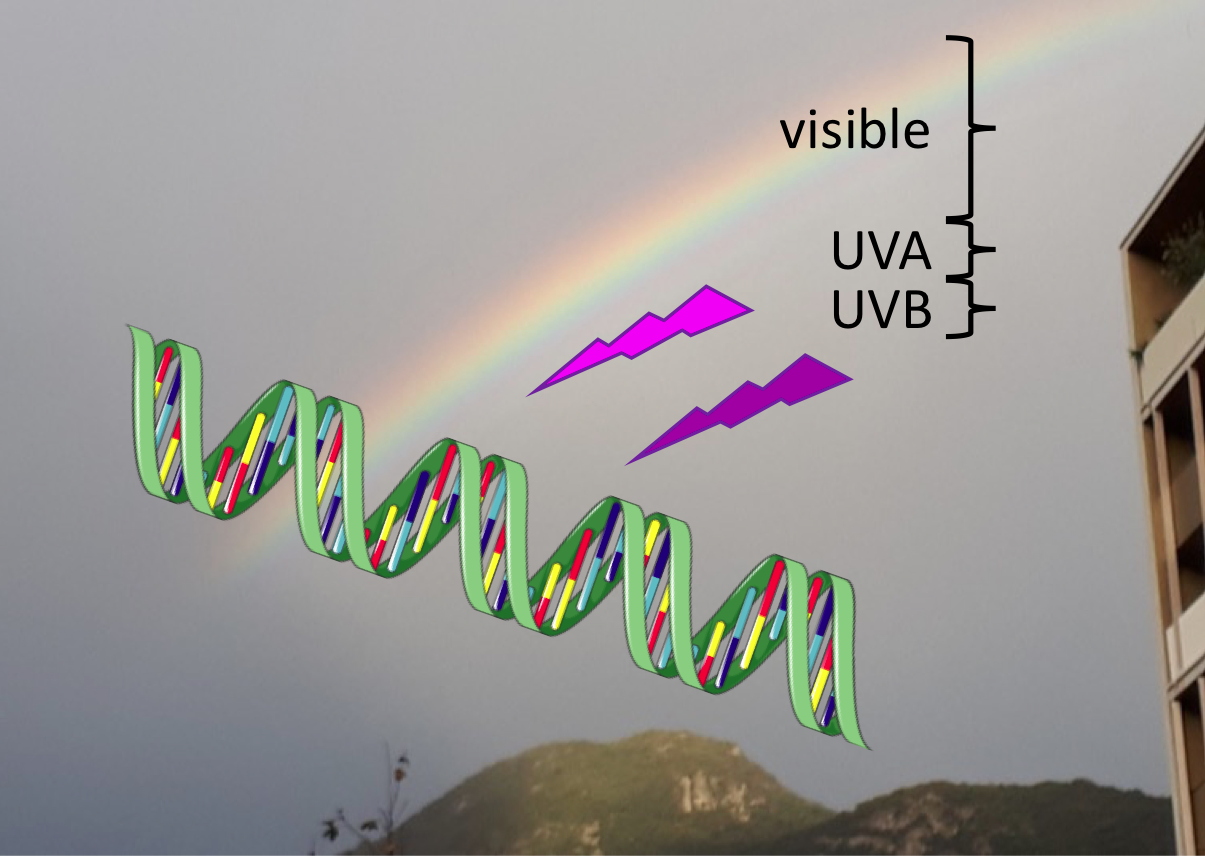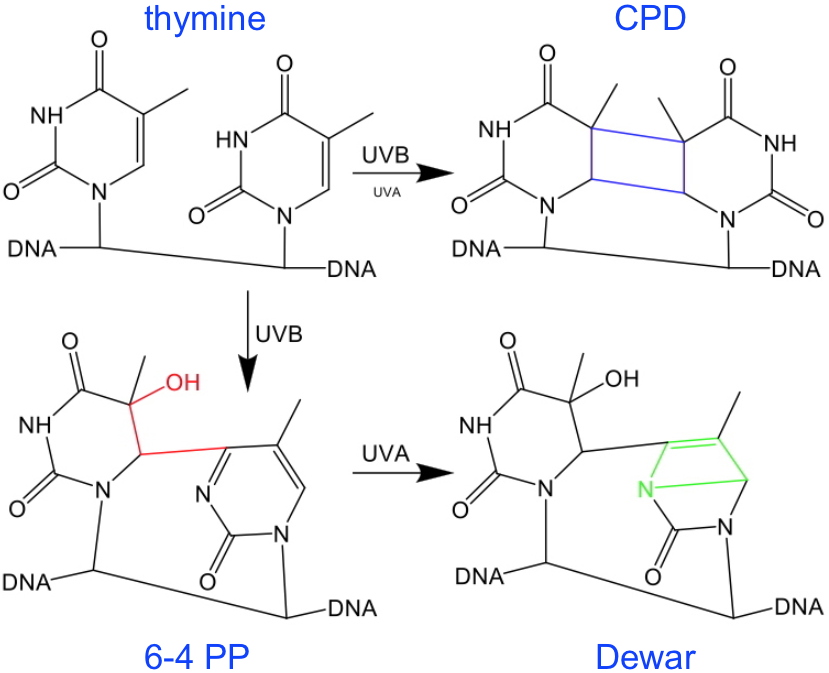Sunlight is made up of an infinite number of colors,
i.e. photons of varying energy (or wavelength). This complexity must be considered when studying the biological effects of sun exposure. The most biologically active components in sunlight reaching the Earth are in the ultraviolet portion: about 95% UVA, and 5% UVB, the latter being the most energetic. Studies comparing UVB and UVA have shown the importance of UVB, which are efficiently absorbed by biomolecules. More precise studies have made it possible to define action spectra that report the intensity of the effects of interest over the entire solar spectrum as a function of wavelength. This approach can be predictive of the effects of a specific exposure. However, it has a drawback: it is based on a principle of additivity between the effects of different wavelengths, and does not consider possible synergies or antagonisms between the Impacts of several wavelengths.

Researchers at IRIG have recently highlighted this problem, which can be found in various fields: immunosuppression, induction of oxidative stress, genotoxicity, cell death, etc.
[1]. To go beyond this simple observation, it is necessary to quantify the amplitude of synergistic or antagonistic effects in UV responses. To address this challenge, the researchers were inspired by a data processing method initially developed for the optimization of anticancer drug combinations.
To assess its applicability to photobiology, IRIG researchers focused on the combined effect of UVB and UVA on DNA
[2]. This system represents a particularly relevant model since some photoproducts (
Figure), cyclobutane dimers, are produced by UVB and UVA in an additive way. The pyrimidine (6-4) pyrimidone (6-4 PP) photoproducts, on the other hand, are generated solely by UVB but are converted into
Dewar isomers by UVA. The combination of UVA and UVB is therefore synergistic for the appearance of Dewars but antagonistic for the formation of 6-4 PP. Modeling the experimental results allowed the researchers to quantify all these effects. A study at three wavelengths even allowed them to demonstrate the importance of the shorter UVA in the photoisomerization phenomenon. Their work also allowed them to improve to the initial method, such as the demonstration of the possible use of new equations for modeling the data and a rigorous approach to error evaluation.
Following this validation, the teams, supported by the
Arcane Labex, will be able to undertake cellular studies.

Figure: Chemical structure of solar UV-induced photoproducts in DNA.
The Dewar valence isomer is named after a 19th century British scientist working on the structure of benzene, and results from a modification (photoinduced 4π intramolecular electrocyclisation) of the pyrimidone ring. The 6-4 PP can give rise, by absorption of a second photon, to a photoproduct known as the Dewar valence isomer, or Dewars, involved in solar genotoxicity.
This project is supported by the Arcane LabEx, a consortium of scientists from the University of Grenoble whose common scientific objective is bio-motivated chemistry.